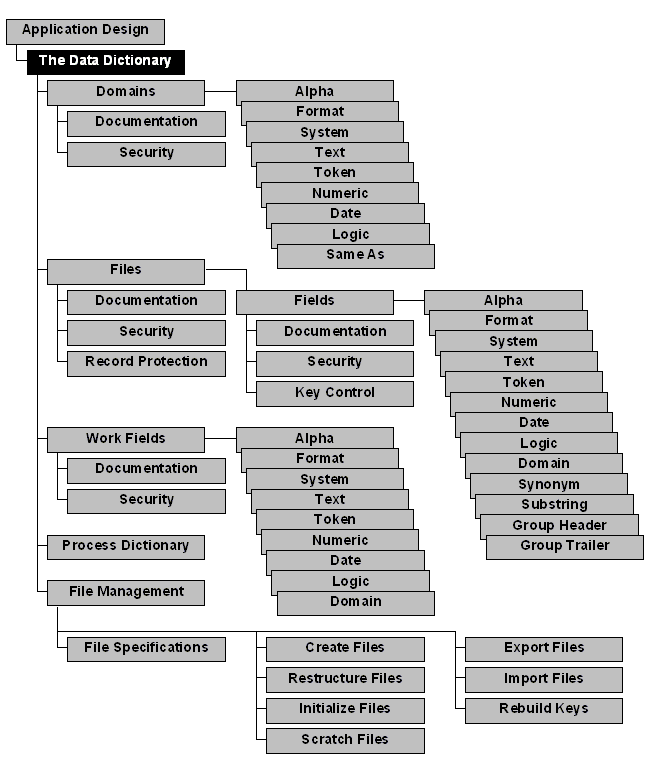Chapter 1-3: Data Dictionary |
The Components of the Data Dictionary The principal components of APPX's data dictionary are the application's domains, files, fields,and work fields. Domains are generic definitions, or patterns, for fields that share a set of common attributes. For example, your application may include a number of different fields that store a vendor number'a purchase order vendor number field, an accounts payable vendor number field, an invoice entry vendor number field, and so on. Each of these fields is the same length and has the same alpha and numeric components. You define these common attributes in a 'vendor number' domain, and have each of these fields reference the same domain. Files are data storage structures that consist of a collection of related records. Each record contains one or more fields. The record layout for a file is determined by the fields defined for that file within the data dictionary. Fields are the most elemental data storage structures of applications. They store the individual items of information available to users of APPX applications. Work fields are temporary fields that are not stored in a file, but which you can use in APPX processes. You cannot save the contents of work fields after a user exits APPX, although you can move work field values to other fields that are stored in permanent files.
The Data Dictionary |
Application Design Manual "Powered by Appx Software"36 ©2006 By APPX Software, Inc. All Rights Reserved |
